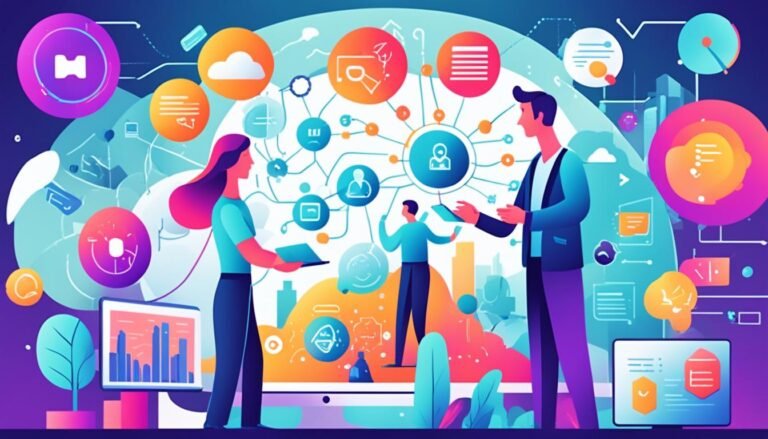How AI Can Help Understand Customer Needs?
In today’s fast-paced, competitive market, understanding customer needs has become more critical than ever. Businesses must be able to anticipate what their customers want in order to stay ahead. With the advancements in artificial intelligence (AI), companies now have a powerful tool that can help them analyze, predict, and meet customer expectations more efficiently than traditional methods.
1. Personalized Customer Experiences
One of the most significant ways AI helps businesses understand customer needs is through personalized experiences. AI can analyze massive amounts of data from various sources—purchase history, browsing behavior, customer reviews, and social media interactions. This data can be used to identify patterns and preferences, allowing companies to tailor their products, services, and marketing strategies to individual customers.
For example, AI algorithms can segment customers based on their behavior and provide personalized product recommendations. Retail giants like Amazon and Netflix use AI-driven recommendation engines to enhance customer satisfaction by predicting what a customer might want to buy or watch next, resulting in higher engagement and sales.
2. Customer Sentiment Analysis
AI-powered tools can perform sentiment analysis, which involves evaluating customer emotions expressed in reviews, social media posts, and customer service interactions. By understanding customer sentiment—whether positive, negative, or neutral—businesses can adjust their strategies to address concerns or amplify what’s working well.
Sentiment analysis provides valuable insights into how customers feel about a brand, product, or service. Companies can use this data to improve customer experiences, address issues in real-time, and create products that better meet customer desires.
3. Predicting Future Customer Needs
AI can go beyond understanding current customer needs and predict future ones by analyzing historical data and trends. Machine learning algorithms can identify patterns in customer behavior and market dynamics to make predictions about what customers will want in the future. This helps businesses proactively innovate and create products or services that will meet emerging demands.
For example, AI can predict when customers are likely to need a replacement for a product they’ve purchased in the past or suggest new products that align with the customer’s preferences and purchase history.
4. Enhanced Customer Support
AI can streamline customer support, leading to a better understanding of customer needs. AI-powered chatbots and virtual assistants can provide instant responses to customer inquiries, gather feedback, and resolve issues efficiently. Over time, AI systems learn from these interactions, allowing them to better understand the types of questions and concerns that customers commonly have.
This improves both the customer experience and the business’s ability to gather valuable insights into what customers are looking for, what they struggle with, and how their needs evolve over time.
5. Voice of the Customer (VoC) Programs
AI enables businesses to gather and analyze data from Voice of the Customer (VoC) programs. VoC refers to the process of capturing customer feedback from multiple channels such as surveys, social media, call center recordings, and online reviews. AI can sift through this data quickly, identifying key themes and sentiments that would otherwise take humans days or weeks to analyze.
By combining AI with VoC programs, businesses can develop a deeper understanding of what customers are saying about their products or services, and how they can improve to meet those needs.
6. AI-Driven Market Research
Traditional market research methods, like surveys and focus groups, are often time-consuming and limited in scope. AI revolutionizes market research by collecting and analyzing real-time data from a variety of sources, such as social media, online forums, and transaction histories. This allows businesses to get a more comprehensive and dynamic understanding of customer needs.
AI can also automate the analysis of competitor strategies, industry trends, and consumer preferences. This helps businesses stay agile and make data-driven decisions to better meet evolving customer needs.
7. Customer Journey Mapping
AI can be used to track and analyze the customer journey, which is the path customers take from discovering a product or service to making a purchase and beyond. AI helps businesses visualize this journey by analyzing data points at each stage, identifying pain points, and predicting potential roadblocks that might lead customers away from completing a purchase.
By understanding the customer journey more thoroughly, businesses can optimize each touchpoint, provide better customer experiences, and ultimately meet customer needs more effectively.
Conclusion
AI is transforming the way businesses understand and respond to customer needs. By leveraging AI for personalized experiences, sentiment analysis, predictive insights, and enhanced customer support, businesses can gain deeper insights into their customers’ preferences and behavior. This allows them to not only meet but anticipate customer needs, giving them a competitive edge in an ever-evolving market.
As AI continues to evolve, its role in customer understanding will only grow, helping businesses create more meaningful and successful customer relationships.







